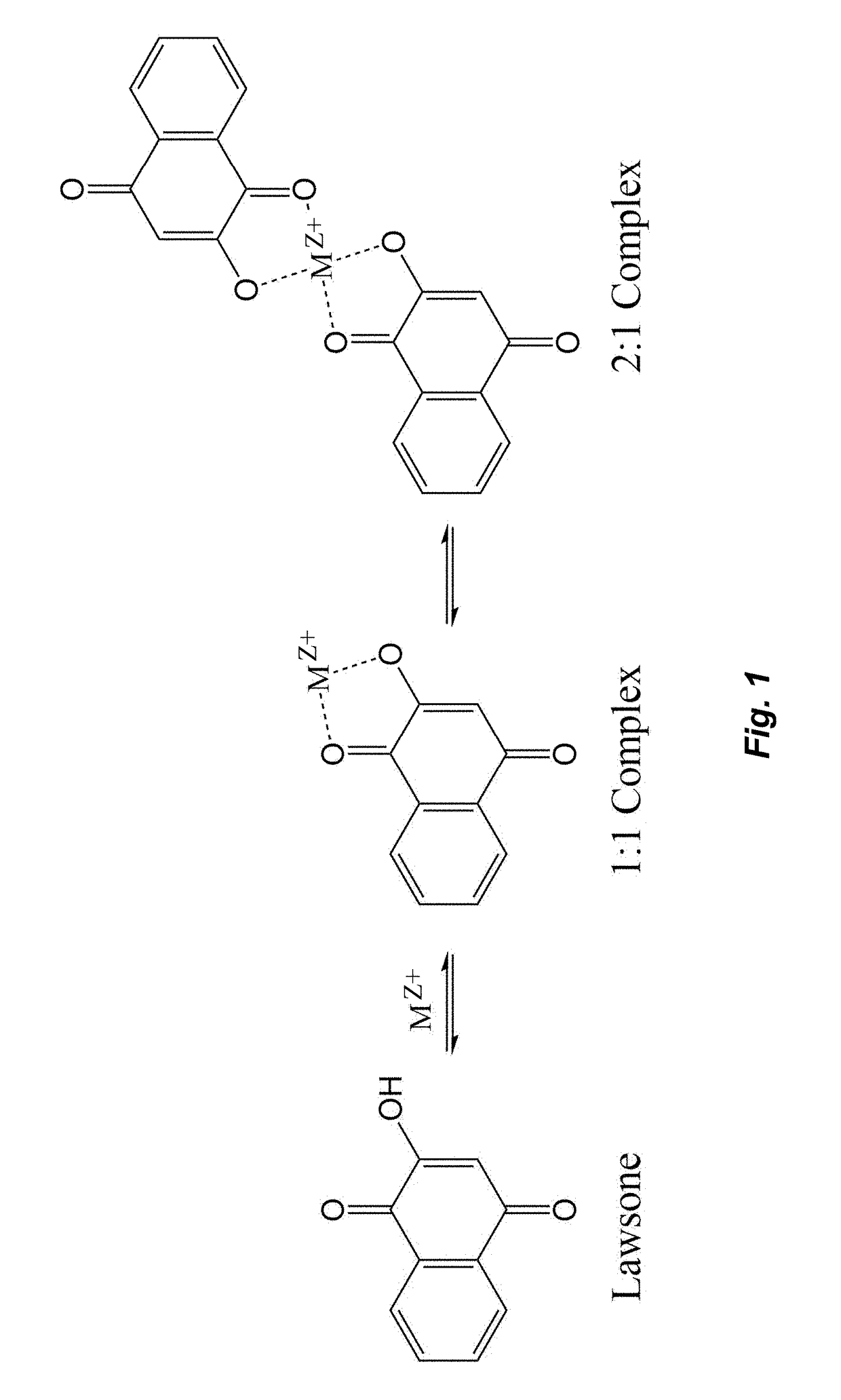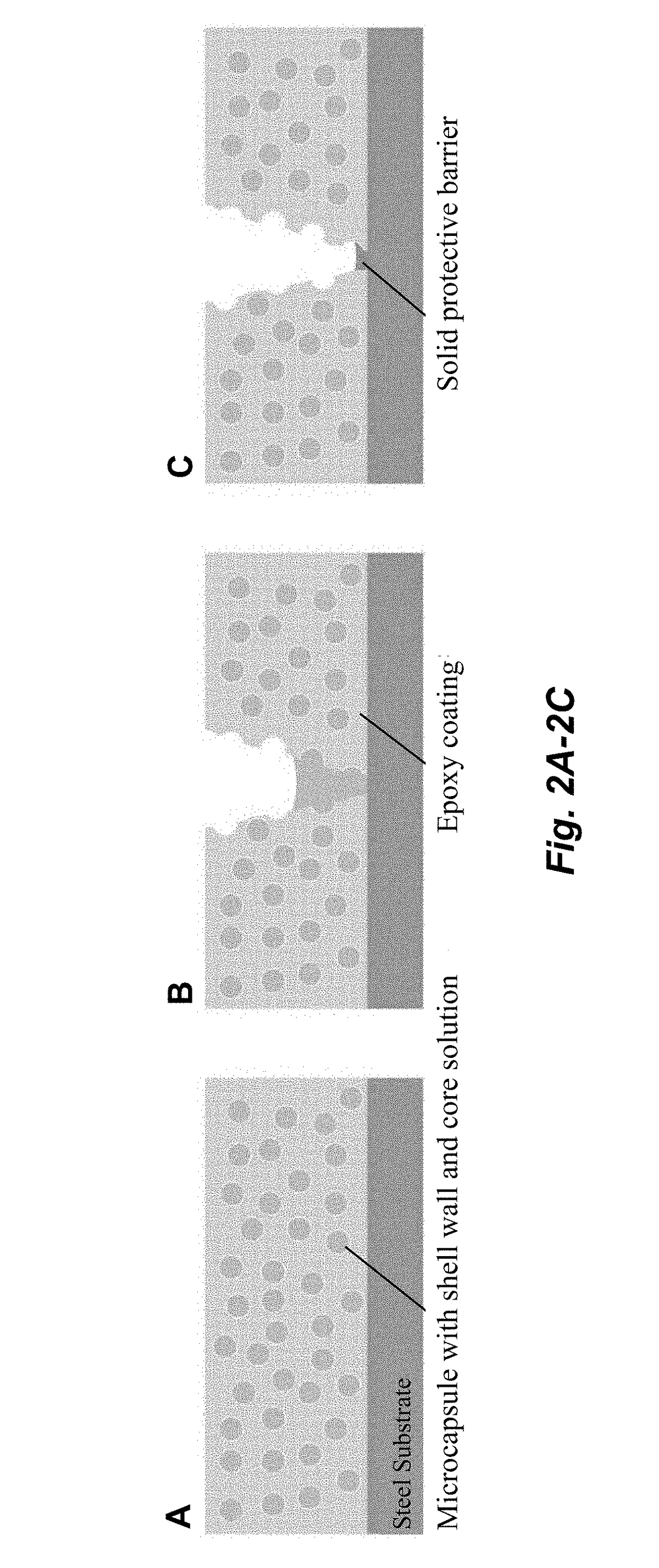Corrosion inhibiting self-protecting coatings
a self-protection coating and corrosion inhibitor technology, applied in coatings, layered products, chemical instruments and processes, etc., can solve the problems of affecting the safety of people and the environment, and releasing voc by unpleasant odors, etc., to achieve the effect of inhibiting corrosion
- Summary
- Abstract
- Description
- Claims
- Application Information
AI Technical Summary
Benefits of technology
Problems solved by technology
Method used
Image
Examples
example 1
Materials
[0074]The microencapsulation materials gum arabic, hexyl acetate, and lawsone were purchased from Sigma Aldrich (St. Louis, Mo., USA) and were used as received. The microcapsule shell wall material was prepared from a polyurethane prepolymer (Desmodur L 75) provided by Bayer MaterialsScience. Hot rolled steel substrates following ASTM A569 were purchased from Metals Depot (Winchester, Ky.). The epoxy coating consisted of Epirez resin 6520-WH-53 and Epikure curing agent 6870-W-53, and were obtained from Chemical Marketing Concepts Inc.
example 2
Microcapsule Fabrication
[0075]The microencapsulation procedure was modified from Mangun et al. (Polymer, 2010, 51 (18), 4063). The surfactant gum arabic (9 g) was slowly dissolved in 80 ml of deionized (DI) water in a 400 mL beaker. The core solution consisting of 40 g hexyl acetate together with a range of concentrations of lawsone was mixed with 5.0 g of polyurethane prepolymer (shell wall) in a separate beaker. The core solution was then slowly added to the water and surfactant solution while undergoing mechanical agitation with a 51 mm diameter low shear mixing blade at 1200 RPM. Mixing was allowed to continue for two hours at 85° C. in a temperature controlled water bath.
[0076]The resulting capsules were allowed to float in a separatory funnel and rinsed in deionized (DI) water until the solution was clear and free of excess lawsone. The microcapsules were then freeze dried to remove all excess water. The naming convention and lawsone content of the core solution for microcapsu...
example 3
Capsule Core Analysis
[0077]The final lawsone content of the encapsulated core material was determined by extracting the core material and performing UV-vis spectroscopy of the sample. Using a calibration curve (FIG. 10), the lawsone content can be calculated from the measured peak absorbance of the extracted capsule core material. Thermogravimetric analysis (TGA) was performed on both microcapsules and isolated core materials to determine thermal stability by heating to 650° C. at a rate of 10° C. / min.
PUM
| Property | Measurement | Unit |
|---|---|---|
| weight percent | aaaaa | aaaaa |
| weight percent | aaaaa | aaaaa |
| weight percent | aaaaa | aaaaa |
Abstract
Description
Claims
Application Information
 Login to View More
Login to View More - R&D
- Intellectual Property
- Life Sciences
- Materials
- Tech Scout
- Unparalleled Data Quality
- Higher Quality Content
- 60% Fewer Hallucinations
Browse by: Latest US Patents, China's latest patents, Technical Efficacy Thesaurus, Application Domain, Technology Topic, Popular Technical Reports.
© 2025 PatSnap. All rights reserved.Legal|Privacy policy|Modern Slavery Act Transparency Statement|Sitemap|About US| Contact US: help@patsnap.com



